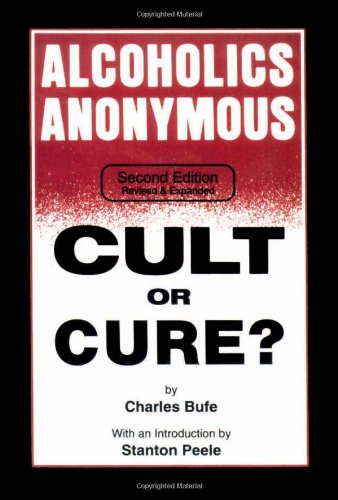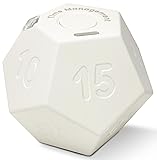All Categories



Alcoholics Anonymous: Cult or Cure?
Share Tweet
Get it between 2025-10-24 to 2025-10-31. Additional 3 business days for provincial shipping.
*Price and Stocks may change without prior notice
*Packaging of actual item may differ from photo shown
- Electrical items MAY be 110 volts.
- 7 Day Return Policy
- All products are genuine and original
- Cash On Delivery/Cash Upon Pickup Available








Alcoholics Anonymous: Cult or Features
-
Used Book in Good Condition
About Alcoholics Anonymous: Cult Or
About the Author Charles Bufe is coauthor of Resisting 12-Step Coercion and author of The Heretic's Handbook of Quotations and An Understandable Guide to Music Theory. Product Description This well researched, painstakingly documented book provides detailed information on the right-wing evangelical organization (Oxford Group Movement) that gave birth to AA; the relation of AA and its program to the Oxford Group Movement; AA's similarities to and differences from religious cults; AA's remarkable ineffectiveness; and the alternatives to AA. The greatly expanded second edition includes a new chapter on AA's relationship to the treatment industry, and AA's remarkable influence in the media. Excerpt. © Reprinted by permission. All rights reserved. Alcoholics Anonymous Cult or Cure? By Charles Bufe See Sharp PressCopyright © 1998 Charles Q. Bufe All rights reserved. ISBN: 978-1-884365-12-6 Contents Introduction (by Stanton Peele), Preface to First Edition, Preface to Second Edition, 1. A Typical AA Meeting, 2. The Oxford Group Movement: The Forerunner of AA, 3. A Brief History of AA, 4. The Oxford Groups & AA: Similarities & Differences, 5. The 12 Steps, 6. The 12 Traditions, 7. How Effective is AA?, 8. AA's Influence on Society, 9. Is AA a Cult? (preliminary considerations), 10. Is AA a Cult? (conclusions), 11. The Future of AA, Appendices, A. Secular Self-Help Groups, B. AA & the Law, Afterword (by Jack Trimpey), Bibliography, Index, CHAPTER 1 A Typical AA Meeting What is a "typical" AA meeting like? Is there such a thing? A look in the AA "meeting book" for any large metropolitan area reveals a bewildering variety of meetings. A San Francisco meeting book from the early '90s, for example, lists meetings seven days a week with the first starting at 6 a.m. and the last starting at midnight; it lists beginners' meetings, step meetings, open meetings, closed meetings, speaker meetings, discussion meetings, candlelight meetings, women's meetings, lesbian and gay meetings, nonsmokers' meetings, writers' and artists' meetings, meetings for retired seamen, meetings conducted in Spanish — there are even meetings for atheists and agnostics. Meeting places range from church basements to library conference rooms to hotel lobbies to rented halls. Meeting sizes range from as few as three or four people up to several hundred at the larger weekend meetings. About all that can be said with reasonable certainty is that meetings last an hour to an hour and a half, and even that's not always the case. Still, certain features are common to virtually all AA meetings, and there are many other features which, while not universal, are typical. If you were to go to a meeting you selected at random, it would probably go something like this: It's ten minutes before meeting time as you walk through the front door of the AA hall, a large, dingy room reeking of stale tobacco smoke. You walk across the grimy linoleum floor to the coffee urn, pour yourself a cup of what appears to be used motor oil (rumor has it that the stuff will dissolve pencils), grab a couple of cookies, and wander over to one of the 40 or so folding metal chairs facing the table at the front of the room. The meeting's secretary and the evening's speaker are already seated at the table, smoking cigarettes and slurping coffee. Other people, mostly casually dressed men in the 30s and 40s, are filing in, gradually filling the seats, and gradually filling the air with tobacco smoke. Perhaps half the chairs are taken when the meeting starts. Precisely on the hour the secretary raps his gavel, introduces himself, and asks two pre-selected members to read the AA Preamble and the Serenity Prayer. Then, since it's a small meeting, everyone in the room introduces himself or herself and is then greeted by the crowd: "My name is Mike. I'm an alcoholic." "Hi Mike!" "My name is Bob. Alcoholic." "Hi Bob!" "Ed. Alcoholic." "Hi Ed!" ... until everyone present has stated his or her name and mutt



























